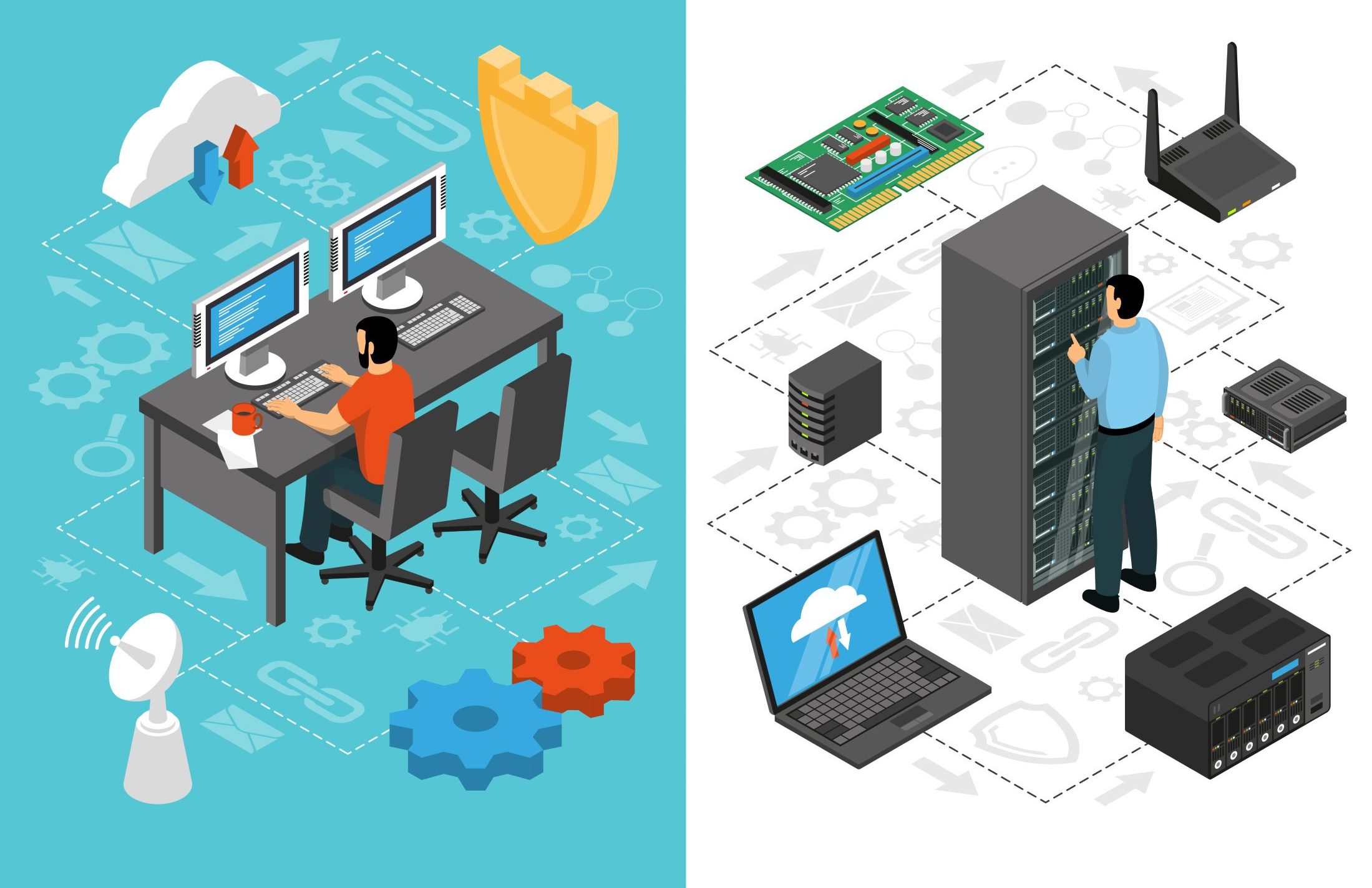The cloud is now becoming a common practice for businesses. Now, they prefer keeping the data in the cloud servers instead of purchasing tons of data servers. A survey in 2017 concluded that 95% of the industry uses cloud services in one way or another. 79% of their workload is currently managed on the cloud. Cloud computing services allow flexible work timings. Ease of access from anywhere in the world is beneficial for staff workers who work remote jobs. It helps in reducing the IT budget which makes it valuable for businesses. There is another unpopular benefit of cloud-computing. It encourages the companies to become environmentally conscious in their decisions and go green.
The future of cloud computing was defined when the enterprises first started using Hotmail. Which enabled the mobile business owners to directly retrieve emails from web browsers. It saved them from the hassle of installing and configuring old email clients like Eudora or Outlook. In 1999, Salesforce.com started delivering industry applications over the internet. Technical analysts were sure by this time, that this is going to be the new trend in technical industry. The Software as a service (SaaS) model of cloud computing offers many business applications. Where contact and customer relationship management applications were the first major solutions.
Cloud computing has always been regarded as a technology of the future – a future that has already arrived. The cloud offers a long list of benefits. Due to which, it has already established itself as a dominant force in enterprise IT. It benefits all no matter who you are. Whether an individual or multinational corporation.
Irrespective of the size of the company, well thought and pre planned model decisions are the recommended practice. As it is a big deal to choose an IT model best suitable to your business needs. This selection will decide the fate of your company success in the longer run. More and more businesses are embracing this new technology referred as cloud solutions. But there are still many organizations working with traditional IT infrastructure.
Each model has its own set of strengths and weaknesses. So, if you’re debating whether traditional or cloud computing is a better suited for your business. It’s important to know in advance what each solution entails. We’ve compiled some interesting highlights to assist you in this regard. Here’s what you should know about these two solutions:
What is traditional IT infrastructure?
A traditional infrastructure entails keeping your company’s servers and related hardware on-site. Most organizations have always relied on this legacy system. Where, employees accessed the company’s data and applications via connecting to on-premises networks.
What is cloud IT infrastructure?
It is the collection of hardware and software components needed to enable cloud computing. Networking equipment, servers, and data storage are its primary physical components. A hardware abstraction layer is also included in cloud infrastructure. Which enables resource virtualization and helps in cutting costs through economies of scale. Pros of one model are the cons of the other model and vice versa. Let us go through the comparison between two.
Advantages of Traditional IT infrastructure
The best part of traditional IT infrastructure is authority or control. Your organization has complete control over the data and applications as they run on your on-premises servers. Some organizations value the security and peace of mind that comes with hosting the whole lot on-site.
On-premises applications are more reliable than cloud managed services. They allow organizations to maintain a higher level of control over applications. When it comes to on-premises software, organizations buy licenses or copies of software. That is used exclusively in-house and resides on-site. So, organizations definitely enjoy better protection. Furthermore, some companies need to run a variety of applications. For them traditional IT infrastructure may be more viable. Because it provides a customizable and dedicated system.
Whereas the cloud services provide many on demand features to developers. They can opt for ready-made deployments or platforms. It not only saves their time, but also relieves them from the hassle of coding from scratch.
Disadvantages of Traditional IT infrastructure
The costs of managing and maintaining on-premises environments are notoriously high. These costs can be a cause of significant drain on the bottom line of many small businesses. They can put a heavy burden on their profits. An in-house setup necessitates the purchase of a data center and software licenses. As well as the hiring of IT staff to provide support and handle potential issues that may arise. That doesn’t even include the costs of maintenance if something breaks down, needs to be upgraded, or fails to function properly.
It also does not include the overhead costs of accommodating the entire infrastructure onsite. The overhead costs may include increased power consumption, software upgrades and support team.
Even the components that make up a conventional IT infrastructure tend to deteriorate over time as well. Regardless of the upgrade costs, old infrastructure may not always perform optimally. It may be more vulnerable to security breaches and data intrusions. When it comes to breaches, there is another significant drawback of traditional IT systems that cloud services do not have. It is the time and cost spent on implementing required security measures. Not to mention the constant need to upgrade the best security firmware to work flawlessly.
With managed cloud services, you don’t need to worry about these costs. Cloud deployments incur less initial consulting and implementation costs. It requires minimal infrastructure maintenance. It provides easy evolution with automatic software upgrades. It doesn’t require downtime for implementation and maintenance. It has built-in user support.
Final verdict…
Overall, the benefits of managed IT services far outweigh its drawbacks. But you’ll also discover that the drawbacks associated with this model can be reduced or eliminated altogether. Ultimately, it is up to you to determine which of traditional IT vs cloud computing is best suited for your company. What’s the best part? There is a hybrid system that combines the two. Which you might want to consider if you’re still on either side of the debate.
Using a cloud solution does not drop the need to hire new employees. Indeed, you can make better use of the people you already have. Once your system is in place, your existing IT team will be able to focus on other tasks. On-premises and cloud-based solutions each have their own set of costs. What is ultimately most cost-effective for your company is determined by many factors. Therefore, it’s a good idea to seek professional help in determining the best solution for your company.
Learn more about Cloud-Tribe managed cloud services. If you have any questions or enquiries, don’t hesitate to get in touch with a member of our team today.






Leave A Comment